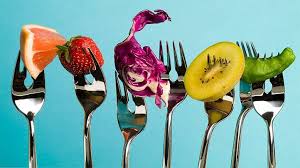Steps to Start Your Diet Right

Steps to Start Your Diet Right

If someone wants to jump-start their new diet, it tells me that they’re committed to the plan and eager to get started. A diet change-up will likely help you to see results, which means it may motivate you to step up your healthy living efforts and stick with your plan.
However, it’s important to change-up your diet the right way. It’s not a good idea to cut your calories too drastically as the nutritional balance of your diet may suffer, and you may become tired and hungry if you don’t provide your body with a reasonable amount of fuel. A diet that’s overly strict is often too difficult to stick with for more than a couple of days.
Read on for my guide to safely kickstart your diet over a 2-week period, in a way that will hopefully help you to sustain your new healthy plan and see results.
1. Commit to your plan in writing
Write down all your reasons for wanting to get into shape, and place your list somewhere where you’ll see it every day so that you can refer to it whenever you feel your commitment starting to slip.
2. Plan out all your meals and snacks
Admittedly this does take some time, but the results will be worth it. When you write out a detailed meal plan, it helps to solidify your commitment. Planning your own meals means you can consider your own personal likes and dislikes and will help you to create a detailed shopping list.
3. Get rid of foods that aren’t on your meal plan
Once you’ve decided what you’re going to be eating, it’s important to get rid of all the things that might tempt you. Go through your freezer, refrigerator and cupboards, and clear out any foods that aren’t on your plan or that you think may tempt you when motivation falls.
4. Eat five times a day.
Try to have three meals and two small snacks everyday, and plan to eat every 3-4 hours. It makes it easier to eat smaller portions at meals and snacks when you know you’ll be eating every few hours. Your snacks can be mid-morning, mid-afternoon or evening – but remember to plan ahead so you don’t end up reaching for unhealthy, high-calorie snacks.
5. Eat all your meals at home.
Eating out is convenient, but you’ll have much more control if you prepare everything at home for the first couple of weeks of your new healthy eating plan. It can be difficult to accurately estimate your calories when you eat out – you often don’t know 100% of the ingredients or the precise portion sizes. When you prepare all your meals, it’s a lot easier to keep track of your calories.
6. Replace two meals a day with a meal replacement
Meal replacements come in many forms, including Herbalife® Formula 1 Shakes. What makes them so convenient is that they’re portion-controlled, nutritionally balanced and take the guesswork out of calorie counting. And they taste delicious too, which means you don’t feel like you’re depriving yourself or flavoursome foods. If your goal is weight loss, many people find jump-starting their new diet easier when they replace two meals with a meal replacement shake, and then have a balanced, healthy dinner.
7. Eat the same menu every day
Don’t get me wrong – canned tuna is a great food, and certainly one of the easiest ways to work more fish into your diet. But canned salmon (which works well in most recipes calling for tuna) has the nutritional advantage since it contains more healthy fat.
Why it’s better: Wild-caught salmon (and nearly all canned salmon is wild) contains a higher proportion of omega-3 fatty acids compared to farmed salmon. Being a fattier fish, a serving of salmon has about twice the omega-3 fatty acids as a serving of tuna.
8. Avocado instead of mayonnaise or other fats
When you’re first starting out, discipline is key, which is why some people find that it helps to eat the same menu every day for the first couple of weeks. Plan out what you’ll eat, how much, and calculate the calories so you’ll know exactly what you’re taking in every day. When you don’t have to make decisions about your food, you don’t have to worry about making any mistakes in your calorie counting or being tempted by an unhealthy alternative.
9. Eat more vegetables than fruits, and more fruits than starches
If you’re trying to work more fruit into your diet, whole fruit is the way to go. The calories in fruit juice can add up quickly, and juice just doesn’t fill you up.
10. Start lunch and dinner with a salad
When you start your lunch and dinner meals with a lightly dressed salad, you’ll start to fill up without consuming a lot of calories. Vegetables take up a lot of space in your stomach, so having your salad first can help you control the portion size of your meal as a whole. Eating in courses also helps you to slow down your eating pace, too.
11. tart every meal with a glass of water
A glass of water won’t necessarily fill you up very much – or for very long – but many people find that it does help. And, since many people don’t drink as much fluid as they should, starting each meal with a glass of water may help to establish this healthy habit.
